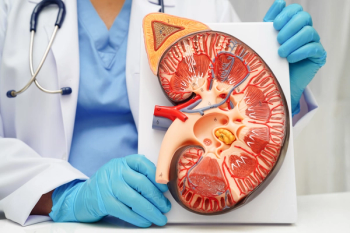
COVID-19 Hospital Burden Associated With Increased Inpatient Adverse Events Among Patients With, Without COVID-19
Key Takeaways
- Increased hospital COVID-19 burden correlated with higher adverse event rates, affecting both COVID-19 and non-COVID-19 patients.
- Hospital-acquired infections and medication-related adverse events rose with higher COVID-19 caseloads, indicating strain on hospital safety systems.
High COVID-19 hospital caseload strain led to increases in inpatient adverse events among patients both with and without SARS-CoV-2 infection.
The COVID-19 pandemic caused a surge in patients admitted to hospitals with serious effects of the virus. Accompanying strain in hospital resources has been observed as patients without COVID-19 who required hospitalization or intensive care unit treatment continues to be admitted. Although some studies have attempted to document this association, many of them did not adjust for the high severity of illness associated with COVID-19 hospitalization or incorporate hospital-specific COVID-19 results.1
Previous research has
Increased COVID-19 caseload at hospitals clearly led to widespread strain on patients with COVID-19. However, overall hospital burden during the pandemic and its effects on inpatient adverse effects (AEs) has yet to be fully analyzed. In the current trial, the investigators assessed the association between AEs among Medicare patient hospitalizations across the US and the inpatient COVID-19 burden that the hospital was contending with at the time.1,2
Patient data was garnered from the inpatient medical records of Medicare patients using the Quality and Safety Review System (QSRS). In total, data from 40,737 hospitalizations to 1210 unique hospitals were included in the analyses; 4114 hospitalizations (10.1%) were among patients with a principle or secondary diagnosis of COVID-19, while 36,623 (89.9%) were among patients without a COVID-19 diagnosis.1
During weeks with the lowest COVID-19 burden, there were 59.1 (95% CI, 54.5-64.0) AEs per 1000 admissions. For weeks with intermediate COVID-19 burden, there were 77.0 (95% CI, 73.3-80.9) AEs per 1000 admissions. Lastly, for weeks with the highest COVID-19 burden, there were 97.4 (95% CI, 91.6-103.7) AEs per 1000 admissions. Among patients without COVID-19, there were 55.7 (95% CI, 51.1-60.8) AEs per 1000 admissions during weeks with the lowest, 74.0 (95% CI, 70.2-78.1) AEs per 1000 admissions during weeks with intermediate, and 79.3 (95% CI, 73.7-85.3) AEs per 1000 admissions during weeks with the highest COVID-19 burden, with a similar pattern seen among patients with the virus, according to the investigators.1
Across the entire sample population, an increasing rate of AEs was found as hospital COVID-19 burden increased. Interestingly, for both hospital-inquired infections and medication-related AEs, incidence was more frequent as COVID-19 burden increased.1
To the investigator’s knowledge, this was the largest and most comprehensive assessment of the association of patient safety events with COVID-19 burden at the hospital level and builds off previously published studies. The Leapfrog Group had reported that hospital-acquired infections reached a 5-year high during the pandemic, concordant with data on hospital-acquired infections reported by the CDC.1,3
The current research extends these insights through linking hospital-specific AEs with weekly hospital-specific COVID-19 burden as opposed to using national COVID-19 rates. Focusing on national rates does not allow for adjustments in the variations of COVID-19 rates in different areas of the country. Ultimately, these results suggest that improvements in hospital safety regarding inpatient AEs are fragile and were not resilient to the increased stress of the pandemic.1,3
“These results illustrate the need for greater resilience, including systems of care that promote patient safety and planning for surge capacity in hospitals to prevent declines in patient safety and effectiveness of care during increases in demand, such as from pandemics, natural disasters, or other causes,” the study authors concluded.1
REFERENCES
1. Metersky ML, Rodrick D, Ho S, et al. Hospital COVID-19 burden and adverse event rates. JAMA Netw Open. 2024;7(11):e2442936. doi:10.1001/jamanetworkopen.2024.42936
2. Halpern L. Pandemic-related hospital caseload strain attributes to portion of COVID-19 deaths. Pharmacy Times. Published September 30, 2024. Accessed November 11, 2024. https://www.pharmacytimes.com/view/pandemic-related-hospital-caseload-strain-attributes-to-portion-of-covid-19-deaths
3. New Leapfrog hospital safety grade reveals significant increase in healthcare-associated infections and worsening patient experience during COVID-19 pandemic. The Leapfrog Group. May 3, 2023. Accessed September 25, 2024. https://www.leapfroggroup.org/news-events/new-leapfrog-hospital-safety-grade-reveals-significant-increase-healthcare-associated
Newsletter
Stay informed on drug updates, treatment guidelines, and pharmacy practice trends—subscribe to Pharmacy Times for weekly clinical insights.
















































































































































































































